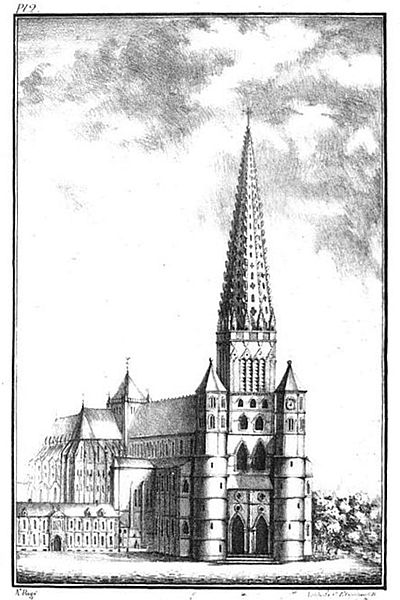Guillaume Du Fay was a composer and music theorist of early Renaissance music, who is variously described as French or Franco-Flemish. Considered the leading European composer of his time, his music was widely performed and reproduced. Du Fay was well-associated with composers of the Burgundian School, particularly his colleague Gilles Binchois, but was never a regular member of the Burgundian chapel himself.
Du Fay (left) beside a portative organ, with Gilles Binchois (right) holding a small harp in a miniature from before 1451. See § Portraits
Sketch of Old Cambrai Cathedral before its destruction in the French Revolution
Pope Eugene IV, in a portrait by Cristofano dell'Altissimo, who employed Du Fay in the papal choir
Letter from Du Fay to the Medici, 22 February 1454
Renaissance music is traditionally understood to cover European music of the 15th and 16th centuries, later than the Renaissance era as it is understood in other disciplines. Rather than starting from the early 14th-century ars nova, the Trecento music was treated by musicology as a coda to Medieval music and the new era dated from the rise of triadic harmony and the spread of the contenance angloise style from Britain to the Burgundian School. A convenient watershed for its end is the adoption of basso continuo at the beginning of the Baroque period.
A group of Renaissance musicians in The Concert (1623) by Gerard van Honthorst
San Marco in the evening. The spacious, resonant interior was one of the inspirations for the music of the Venetian School.
Modern French hurdy-gurdy
Musicians from 'Procession in honour of Our Lady of Sablon in Brussels.' Early 17th-century Flemish alta cappella. From left to right: bass dulcian, alto shawm, treble cornett, soprano shawm, alto shawm, tenor sackbut.








